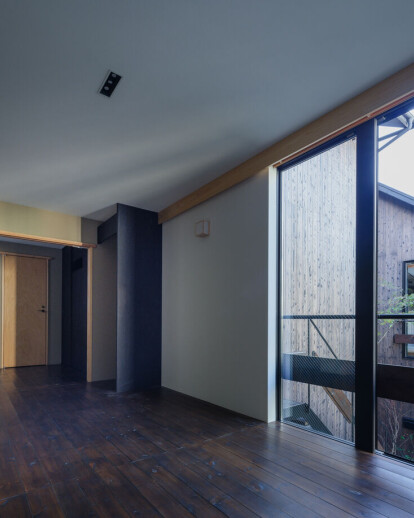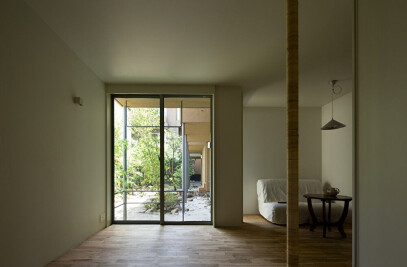Being a rental income property located in a residential area, the complex form derived from mathematical algorithms for maximum volume and regulatory compliance is designed to be vividly experienced by residents through their perception and bodily senses. Each private room and pathway is likened to Japanese tea room and garden, creating a phenomenological dynamism in design.
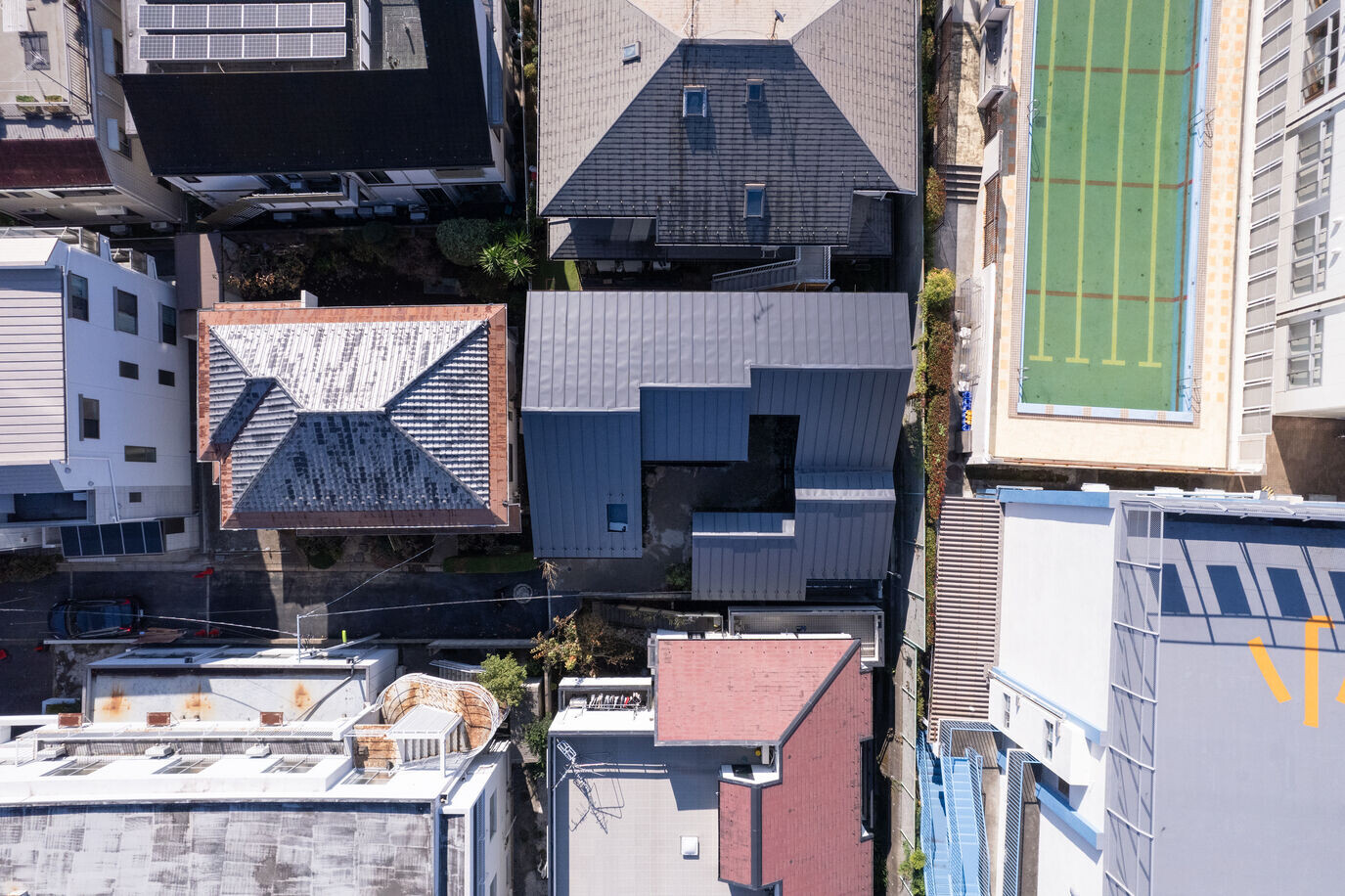

Maximum Volume × Algorithm Compliant with Regulations
The site at the end of the cul-de-sac was surrounded by the rear and sides of the neighboring house with exposed piping, except for the outdoor swimming pool and sky of the adjacent elementary school on the southwest corner, creating a sense of enclosure. Leaving a 2M tangent road length, planned building was placed in a U-shape along the site boundary in a circle to shield these landscapes. The outer perimeter of the building barely meets the width of 50cm required for evacuation routes in accordance with the Tokyo Safety Regulations, so legal daylighting cannot be expected. In order to avoid the clash of sight lines between the rooms and to secure a legally lightable surface, the inner wall of the building was made to run in a geese pattern, while the outer wall facing the only open space, the southwest corner, was made to be the longest. As a result, even the pathway on site within the site, which are in reverse relation to the building, also extend towards the open space at the southwest corner while staggering. The width of these walkways is to comply with the 2 m width required by Tokyo Safety Regulations, the remainder will be used for eaves and gardens. As the planned building is located in Residential Area, it is subject to the strictest shadow regulations. As a result of ensuring daylighting and privacy, the derived form resembles a composite building, where every part of the building contributes to creating shadows, which is disadvantageous for shadow regulations. Therefore, the roof on the west side, crucial for daylighting and views, is lowered into a valley shape, while other parts of the roof undergo subtle height adjustments to minimize composite shadows. As a result, the building's volume takes the form of a series of gabled roofs with various heights and slopes, staggered in shape.
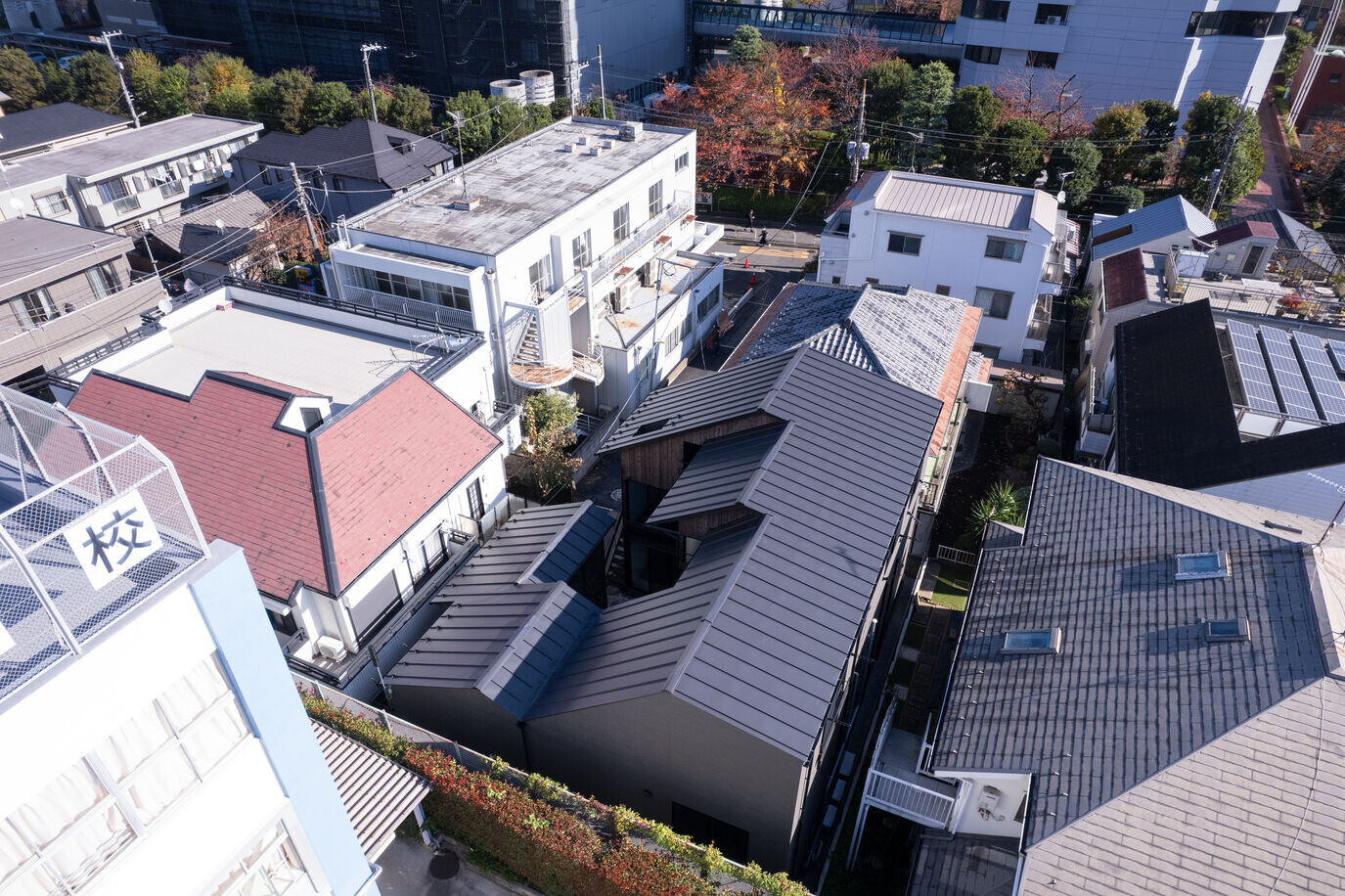

Matching Volume and Layout
To maximize the effective living area of each room, the number of rooms located on the third floor is minimized to reduce the number of stairs, each room is flat type in principle, and indoor staircases are laid out to overlap as much as possible vertically. Two of these staircases are external, ensuring the provision of pathway on site while not counting towards building coverage and volume ratios. The external staircases are positioned at the tips of each gabled roof, while the internal staircases follow their gradients. Any areas where room height cannot be secured are planned as balconies or closets. Each room, facing the pathway on site for good daylighting and views, becomes a living-dining-kitchen space.


Designing a Vivid and Experienced World
The design doesn't stop here. If the above represents a design of the objective external world based on mathematical or physical descriptions, detached from human perception and bodily senses, then it must evolve into a phenomenological design where individuals vividly experience the world through perception and bodily senses. For residents, an apartment building is experienced as a nested structure consisting of individual private rooms and entire building otherwise, including common exteriors. The details of RENZANKYO are designed to create a phenomenological dynamism, akin to the relationship between a Japanese tea-room and the pathway to the tea-room, where the latter serves as a buffer with a city, a passage, and an object of appreciation for the former. The sense of enclosure at the vacant dead end of the alleyway in the midst of the urban hustle and bustle is literally transformed into a "Japanese tea-room" within the city.
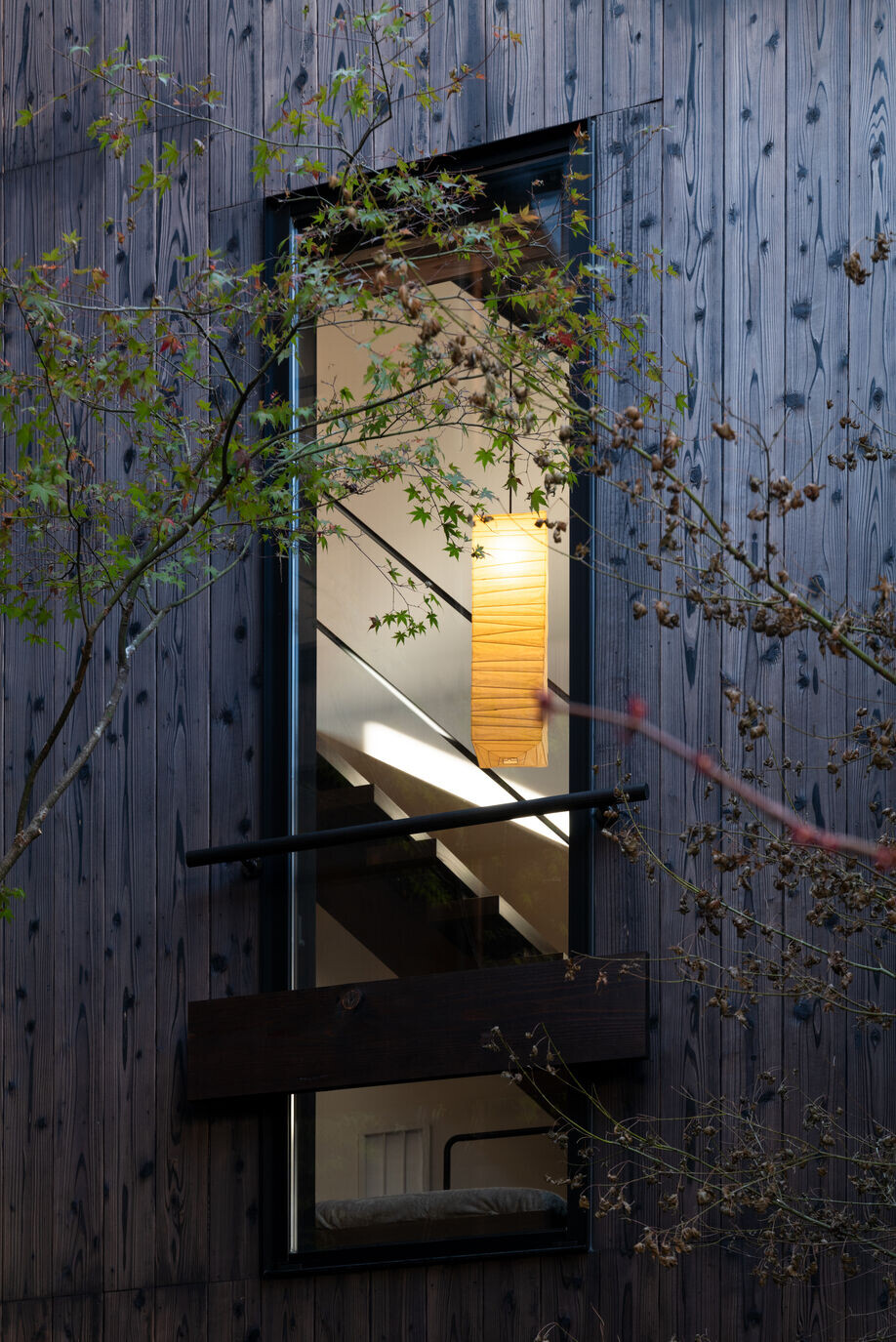
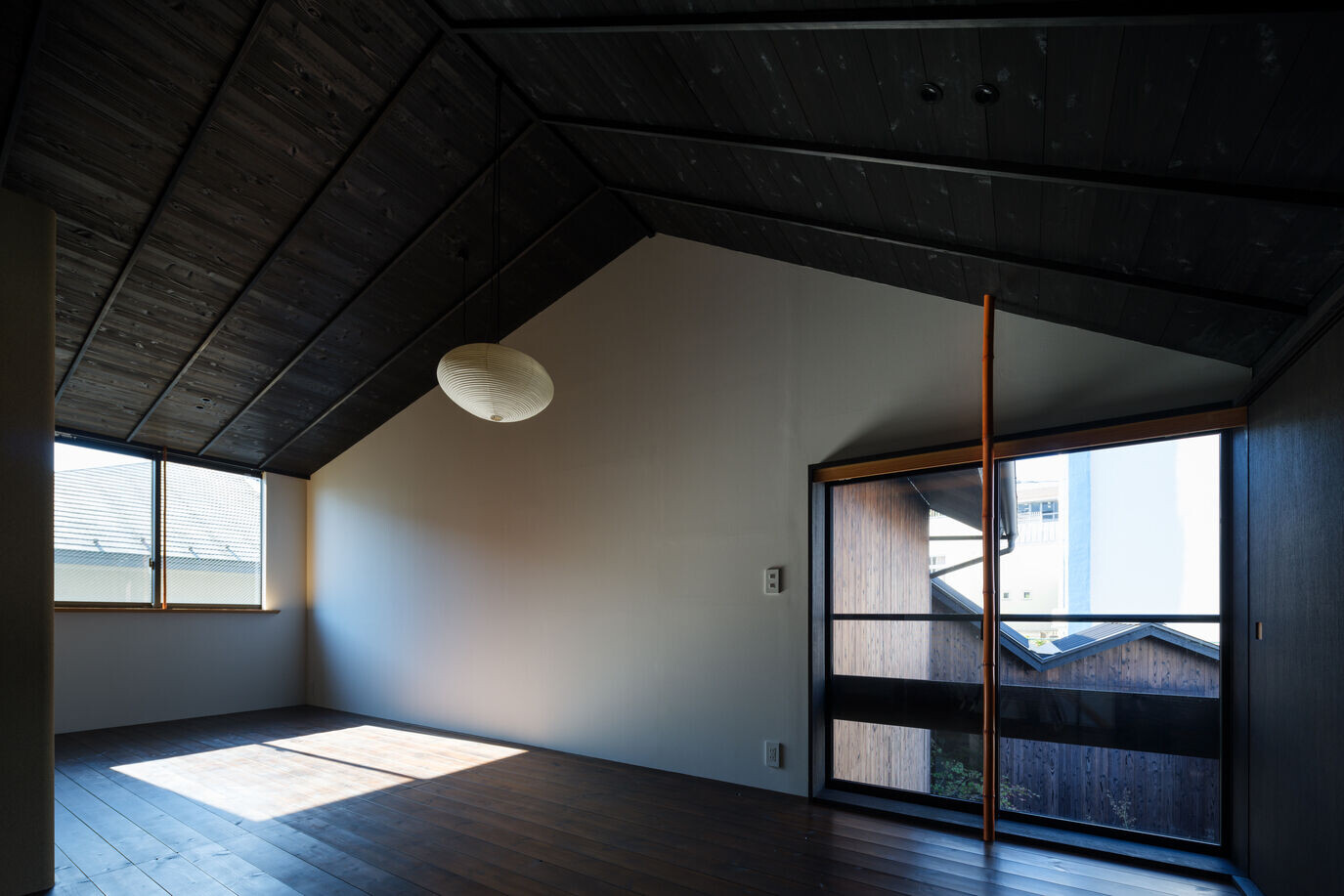
Details as facilities for Japanese traditional gardens and tearoom
When standing in the pathway on site, the buildings, with their zigzag gabled roofs , look like a series of mountains. The exterior walls were made of blackish burnt cedar to make the building look like a mountain against the setting sun. When being in the mountains, the pathway on site feels like a garden path to a Japanese tea-room. The pathway on site is paved with decomposed granite soil and planted with mountain trees and wildflowers, each resident can enjoy glimpses of the surroundings while accessing each room via stepping stones or jumping stones. From Inside the rooms, the view through the window looks like a tea garden with mountain background because of the tree branches weeping in the window. The windows facing the pathway on site are fitted with bamboo mullion to conceal the aluminum rail, and the windows facing the adjacent property are fitted with hanging shoji screens to block out the noise from the neighboring house while bringing shadows into the interior. Interior partition walls are made of mud, with a frame one side protruding used in Japanese tea-rooms. Traditional paper lanterns hang from the ceiling of the top-floor room, creating an appearance akin to exterior garden lanterns.


Team:
Architect: Love Architecture
Photography: Masao Nishikawa


Material Used:
1. Roof: Galvalume steel plate
2. Exterior wall: Charred cedar t10, stain
3. Pathway on site: Decomposed granite soil
4. Japanese garden: Tree: Japanese Ash, Live Oak, Deutzia, Japanese Maple, ex stone: Mt FUJI stone
5. Interior floor: Japanese red-pine t12, stain
6. Traditional gabled ceiling: Japanese cedar plank t10, japanese cedar square timber 18×24, stain
7. Interior wall: Wallpaper



